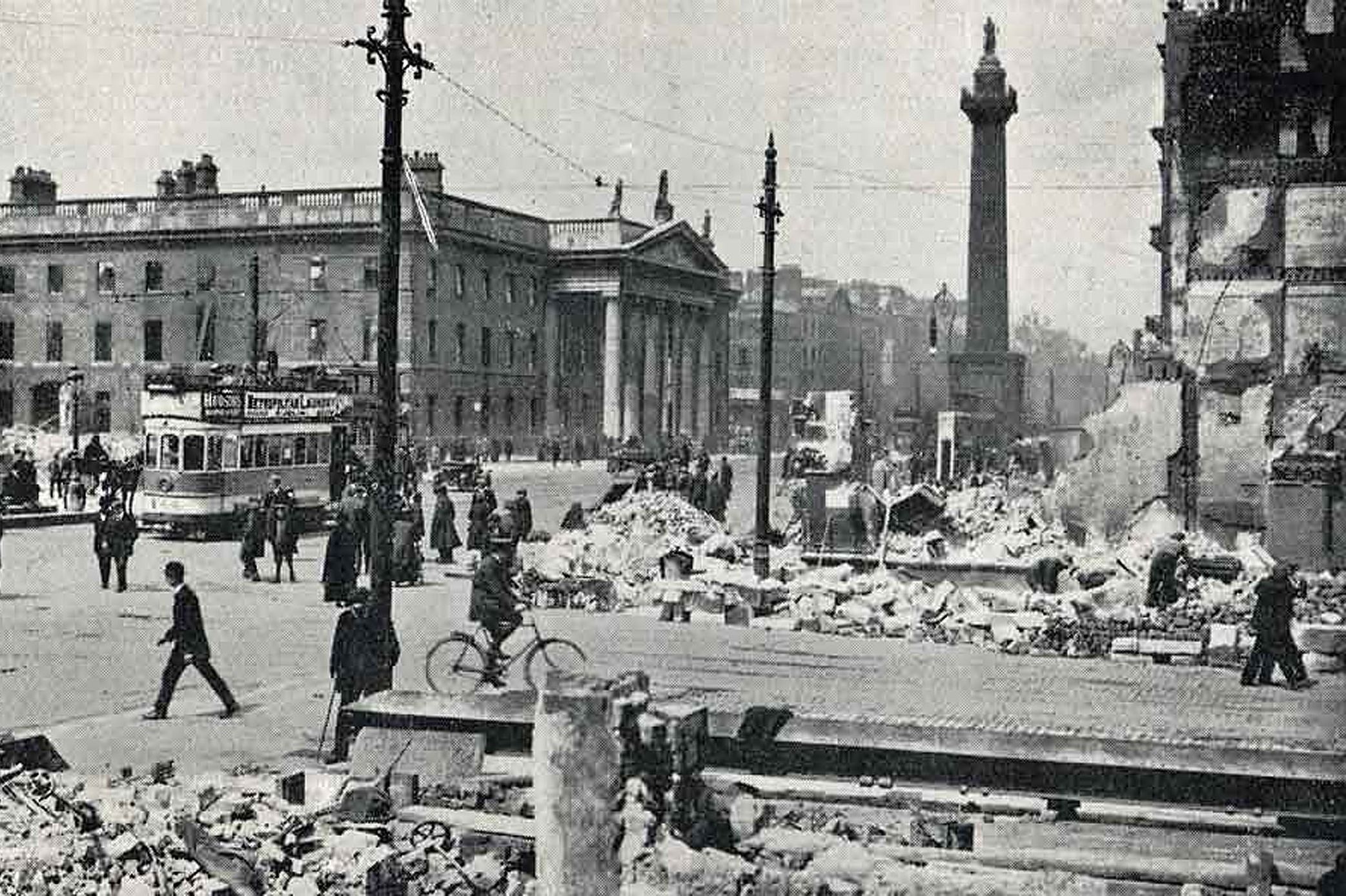"Man and boy I have lived in Dublin, on and off, for 68 years. When I was a young fellow, we didn't talk about Nelson's Column or Nelson's Pillar, we spoke of the Pillar, and everyone knew what we meant." (Thomas Bodkin, radio broadcaster, 1955)

Vice Admiral Lord Nelson was a hero. Leading the Royal Navy, he had defeated both Spain and France in the Battle of Trafalgar in 1805. Mortally wounded, he would die that day but not before victory was secured for both the Harp (Ireland) and the Crown (England). About a third of the Royal Fleet was Irish and 400 were from the City of Dublin. When news of Nelson's victory reached the city in November, Irish men and women celebrated in the streets.
The city aldermen declared that a memorial should be erected to the fallen hero and Lord Mayor established a "Nelson Committee". The committee invited artists and sculptures to submit design proposals. The typical architecture at the time was classical like the Trajan's Column in Rome. William Wilkins, an English architect, proposed a Doric column on a plinth surmounted by a sculpted Roman galley. Some people suggested that the memorial be erected at Dublin Bay or along the river. However, a site on Sackville Street was ultimately chosen.
By mid-1807 the "Nelson Committee" still fell far short of the required 6,500 pounds to erect the statue. Nevertheless, they went ahead with the laying of the foundation stone in early 1808. A memorial plaque, eulogizing Lord Nelson's victory, was laid with the foundation stone. By the time the project was complete in the fall of 1809, the committee had a surplus of 282 pounds. When complete, Nelson's Column stood 134 feet high. It opened on October 21, 1809, the fourth anniversary of Nelson's victory. Visitors could walk up 168 steps to the top of the column where they enjoyed a view of the city, the country and the bay.

Rubble from the General Post Office bombed during the Easter Rising 1916 courtesy http://www.post-gazette.com/life/lifestyle/2016/03/11/St-Patrick-s-Day-Parade-gives-a-nod-to-the-Easter-Rising-of-1916/stories/201603040208.
"For the next 157 years, its ascent was a must on every visitor's list." When Queen Victoria paid a visit to the city in 1849, citizens dubbed the column "Dublin's Glory". Yet only four years later, when the queen visited Dublin for the Industrial Exhibition, city planners considered removing Nelson's Pillar. Any action to remove or resite the Pillar would require an Act of Parliament in London, however. A city alderman suggested replacing the now "unsightly structure" with a memorial to Sir John Gray, who had contributed greatly to Dublin's clean water supply system. But the "pillar had become part of the fabric of the city".
The Easter Rising of 1916, sparked by a peaceful protest which turned deadly, caused massive destruction on Sackville Street. Several buildings burned to the ground including the General Post Office. However, Nelson continued to stand on his perch, almost oblivious to the melee. Other than a few bullet holes, the column remained standing. In fact, "the statue was visible, against the fiery backdrop, from as far away as Killiney, 9 miles away."

Nelson's Pillar remained in place on Sackville Street until March 8, 1966 when a bomb blasted the top half off leaving only a 70 foot stump. "There was an air of inevitability about the about Horatio Nelson's eventual demise: King William of Orange, King George II and Viscount Gough in the Phoenix Park had all fallen victim to republican bombings." (https://en.wikipedia.org/wiki/Nelson%27s_Pillar)
The rest of the Pillar was destroyed by the army on March 14. Some portions of it, including Nelson's head, are on display in museums. Lettering from the monument is now part of the Butler House walled garden.

No comments:
Post a Comment